The Celts were a tribal collection of people residing in central Europe with a common ground of culture, language, and beliefs. Celtic origins dating back to 1200 B.C have always been a disputed issue in history.
Indo-European people in Europe and Anatolia, Celts, were linked to having come from the Upper river, the Danube.
However, concrete evidence does not prevail. The Celts were better known as migrating people, who settled in Ireland, Britain, Turkey, Wales, and France.
Celtic people were well-groomed as archeologists discovered numerous hair grooming tools. Men wore long knee-length tunics while the women wore long, loose-fitting linen woven dresses.
Roman, German, and Slavs crippled the culture-rich Celtic empires after conquering Celtic land during migration.
Are Celts and Vikings similar?
Content
Celts differ from Vikings; however, some Norse-Gaels marriages resulted in a cultural mixture between Vikings and Celts.
Who did Celtic people worship?
Celts were closely related to worshiping nature and its components like lakes, rivers, sun, moon, and other aspects of the natural world.
What is the Celtic curse?
Celtic curse or “hemochromatosis” is a genetic metabolic disorder that the Celtic Irish descendants have inherited where the blood has excess iron.
Celtic language
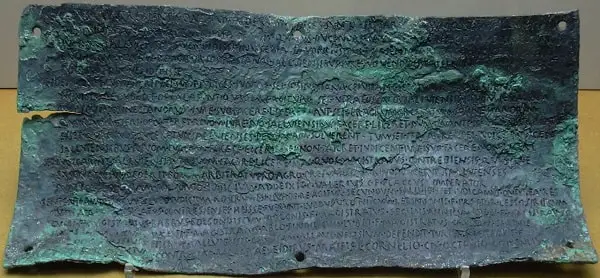
The Celtic languages were a group of closely related languages sharing common roots “Proto-Celtic” or Common Celtic.
The Proto-Celtic speech contained no records; however, historical linguists believed it to be a conservative language descended from Proto-Indo European.
The Proto-Celtic evolved from Proto-Indo European around 1300 BCE, from the Central European zone called “Hallstatt Zone.”
This zone borders Germany and Austria in the present day, which demonstrates the cultures of the Bronze age.
Although around 16 Celtic languages were thought to have existed, out of which only six remained in speaking tones.
Irish, Breton, Cornish, Manx, Scottish, and Gaelic could survive the extinction phase of the Celtic dialects.
Based on geographical and chronological backgrounds, the dialect has been categorized into two branches:
Continental Celtic
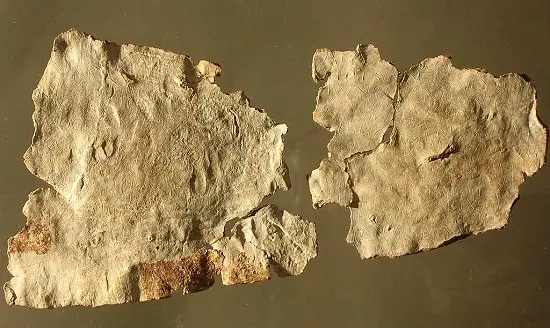
Continental Celtic, also known as the Gaulish language, was spoken by those living in European continental regions.
Gaulish was once a widely spoken tongue in Gaul(modern-day France), which died out.
The concrete evidence for the existence of Continental Celtic consists of names of places, tribes, and people used by ancient Greek and Latin authors.
Likewise, Gallic inscriptions were also found in France and northern Italy, along with Greek and Latin inscriptions that preserved the Celtic references.
Linguists refer to the resemblance of the Gaulish dialect to Latin, so Celts learned Latin, abandoning their native language.
The Gaulish tongue, already on the verge of extinction, died out ultimately after the German invasion of Gaul.
Insular Celtic
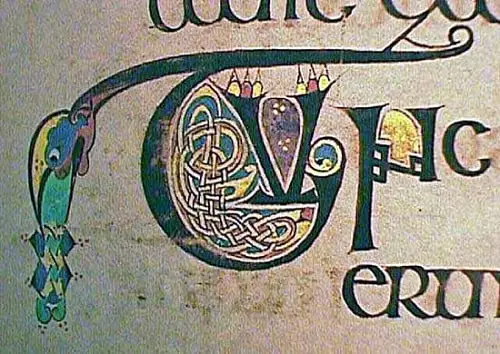
The Insular Celtic dialect was spoken in France, British isle, and Brittany. It was an importation from Britain and not a continental Celtic.
The evidence of the script was embodied as Latin and ogham alphabets from 4th-8th century A.D.
The insular dialect was further classified into two groups: Irish and British.
The Irish language was majorly announced in Ireland during the 5th century A.D when its historical interpretation had just begun.
Gaelic type of Celtic tongue resulted from the migration of Celts into Ireland. Britain’s first wave of the Celtic invasion reached Scotland and the Isle of Man.
Similarly, the second wave approached southern England and Wales, then into Brittany, producing another branch of Insular language known as “Brythonic” or British.
In 5 th century, the Anglo-Saxon strike broke out, so the British Celts moved towards the west and north.
After the geographical separation, the language was segregated into Cornish in Cornwall and Welsh in Wales.
Celtic Art
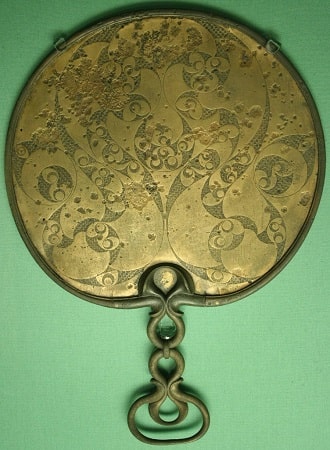
Celtic art refers to the visual paintings and sculptures during the European Iron age. The most enigmatic masterpieces were the naked sculptures of gods, warriors representing love for every mundane object.
The art was influenced by neighboring Thracian traditions that depicted numerous themes.
The recurring themes all over Europe included depicting animals, gods, warriors, decorative items, and even everyday used items.
Over time, Celtic arts underwent dynamic changes when Celtic people mixed their ideas with Romans, Greek, and Persians via trade and diplomatic gifts.
They gained fame with their illumination in manuscripts, brooches, potteries, and jewels.
The Celtic culture has been distinguished into three eras: Hallstatt Culture, La Tène, and Celtic Revival, which represent the roots of Celtic culture, a prime period of artwork, and the modern interpretation of art history, respectively.
Hallstatt Culture
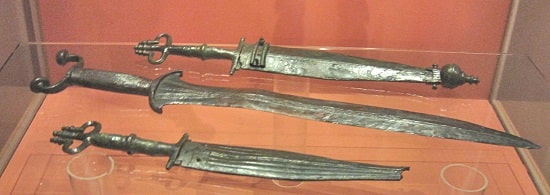
The Hallstatt culture from Austria originated during 800 – 475 BCE, nurturing Celtic art from its roots.
It flourished all over Europe encompassing Switzerland, Hungary, Croatia, northern Italy, and France.
Iron weaponry, tools, and bronze ornaments were the major attractions of the Hallstatt Culture.
La Tène Culture
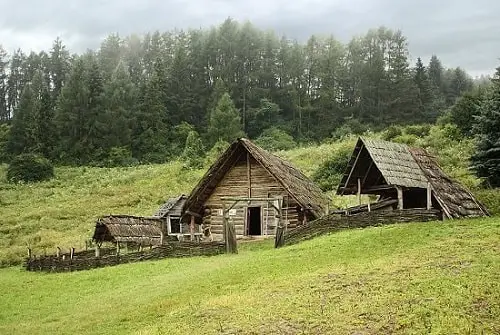
La Tene Culture marked the beginning of Celtic art during the 5 th century B.C. A village in Switzerland served as the site of archeological extraction of buried artifacts of Celtic times.
Widely known for the swirling curvilinear patterns, artists also worked with gold, bronze, and other metals for personal adornment jewels.
The burial sites across Europe have been the basis of studies conducted on Celtic traditions.
Celtic Revival
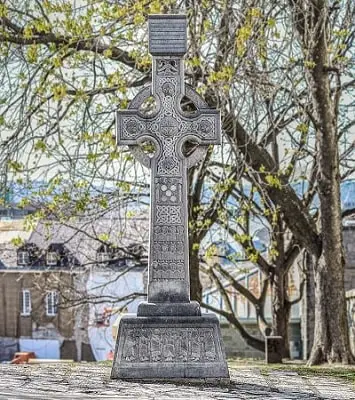
The Celtic art culture was later revived during the 1800s based on British and Irish Celtic arts.
The designs were mainly depicted in textiles, wood inlay, stone carvings, embroidery, and ornaments.
Artists like Archibald Knox, a metal designer, and Charles Rennie Mackintosh, a watercolor painter, received global exposure, reflecting Celtic arts.
Celtic Sculpture

Celtic sculptures focused on human figures carved out of metals, woods, or hammered bronze.
Gods, warriors, and epitomes of heroic personalities could be sculpted; for instance, Cernunnos, a horned god, appeared in several stone carvings.
France and Ireland were the locations for the survival of religious Celtic sculptures presented in pyramids decorated with glasses and coral shells on the outer surfaces.
A fine example is the Pfalzfeld St, Goar pillar in Germany, standing still since the 5 th century.
Celtic Pottery

Celtic pottery vessels were elegantly decorated, curved, and perfectly polished. The introduction of the pottery wheel from the Mediterranean made better quality pots that were earlier copied on bronze.
Cats fond of wine had developed Linsen Flasche, a long-necked flask for wine storage.
Likewise, a Bulbous pitcher with a minute pedestal lacking handles swerves was made in the 4th century.
Celts embellished the pots with spectacular geometric or curvilinear patterns stamped on them.
Celtic Carpet pages
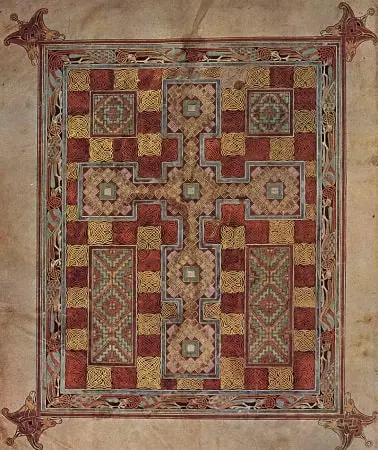
Celts garnished the illuminated manuscripts with ornamentations made on the first page of Gospel books containing geometrical interlaces.
Bobbio Orosius could be a fine example that existed in 7 th century.
Celtic Shields
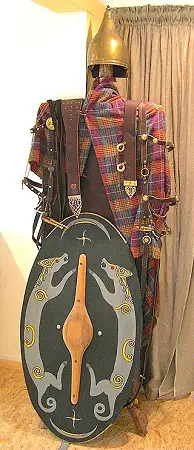
Celtic shields were often wood leather buckled with metals to strengthen the warriors.
Archeologists recovered the Witham Shield and the Wandsworth swords dating back to 400-150 B.C.E from the English rivers.
Celtic Brooches
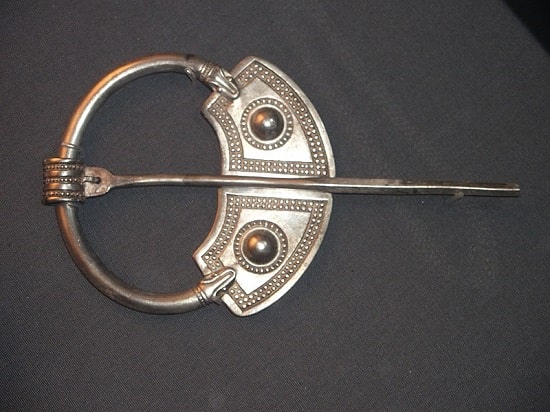
Celts loved creating ornate brooches, pins, and even mirrors. The artists flashed their skills by making penannular brooches composed of spiral knots to hold the clothing together.
The Tara Brooch, estimated to have been manufactured around 700 AD, served to imagine the contemporary Celtic arts and is currently safe in the National Museum of Ireland.
Gaelic literature
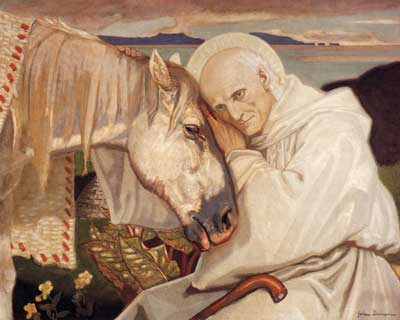
One of the oldest pieces of literature globally, Gaelic literature, was the native tongue of Irish and Scottish people.
The separation of Scot Gaelic and Irish Gaelic in the 17 th century drifted into four sub-divisions.
Old Irish or Old Gaelic
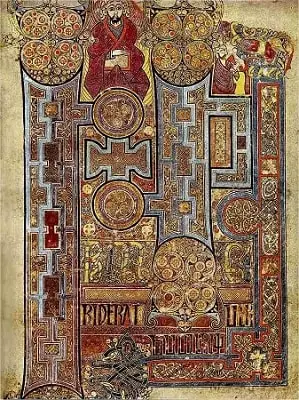
Before Christianity’s arrival in Ireland, the Gaels had limited literacy levels in Primitive Irish. It was mainly manifested in the ogham inscriptions on swords, stones, and woods.
Irish preserved their cultural values only through oral culture rather than written down.
Early literature was found to have existed in the 6 th century in church hymns, prose, verses, and then in medical, legal, or miscellaneous writings.
The chief literary works in Gaelic literature were the Book of the Dun Cow, the Yellow Book of Lecan, and the Lebor Brecc. Dallan Forgaill was the most popular filid Gaelic poet of the 6 th century.
Middle Gaelic

The Middle Gaelic was the vernacular in Ireland, Scotland, and the Isle of Man from 900-1200 A.D. It was the contemplation of old English and early Middle English.
Middle Irish was a fusional, nominative dialect found mostly in heroic tales and romance. It has been split into the Ulster and the Fenian cycle.
The Ulster cycle dealt with the boasting tales of the victors of the century before Christ.
The historical linguists interpreted the language as simple with the richness of imaginary colors and details. The finest middle Gaelic work was the story of Longes Mac Nursing.
The Fenian cycle came into practice around 300 years later than the Ulster cycle. It was more of a romantic, fictitious piece of writing to describe fables of love, war, and peace.
Unfortunately, the Ulster tales vanished, but the Fenian adventures remained alive until modern times, especially in Scotland.
Classical Gaelic
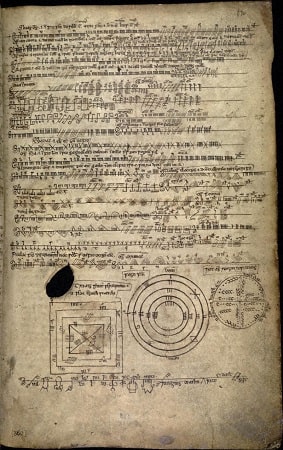
Classical Irish was the great revival and the rise of modern Irish prose between 16 – the 18 th centuries. It was a shared literary structure between Scotland and Ireland.
Ireland was in a fierce battle with England, more of a losing battle, so the poetry at the time was purely patriotic.
Ireland’s religious and monumental historical accounts were the foundation of modern Irish literature.
An intense famine hit Ireland in 1947, known as the potato famine resulting in massive depopulation.
With the number of native speakers and writers decreasing, classical Gaelic literature faded.
Modern Scots Gaelic
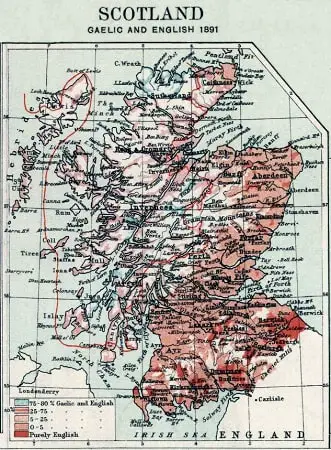
The Irish compositions were used in European dialects whose fame was revoked after the Gaelic Revival movement in the 19 th century.
The Scots and Irish Gaelic had close interconnection until the Scots came with their language after 16 the century.
By the end of 19 th century, Irish Gaelic literature converted into minority usage rather than Scottish Gaelic. Scots preserved their language and literary writings in monuments later translated into English.
Mabinogion

The Welsh mythological tales collectively known as the Mabinogion were based upon a manuscript “Red book of Hergest” from the 14 th century.
It comprised eleven sets of stories that were so diverse and condemned to be authentic.
The stories represent Celtic traditions in an imaginary magic-land resembling Wales for genres like fantasy, romance, tragedy, humor, and philosophy.
Welsh Royal families were the center of focus, whose members indicated mythological deities.
The stories were passed down through generations, especially practicing oral culture, each time new adding were made by a new orator. However, the exact origins of Celtic stories remain a mystery.
The Mabinogi had four parts where the plotline circumfuses Pryderi, a male character.
Pwyll dealt with the power acquisition of prince Dyfed, Branwen talked about the unfair attribute of the queen that burst a war in Ireland, Manawydan included the salvation of a mother and child, and finally, Math, the lord of Gwynedd who turned his nephews into fearsome beasts.
King Arthur and his tales made up the remaining pieces of the stories. The Mabinogion series was translated under Lady Charlotte Guest’s direction in 1840 A.D.
Lady Guest was an active supporter of the Welsh language and culture, contributing to the revival of Welsh festivals and Eisteddfod.
Y Gododdin
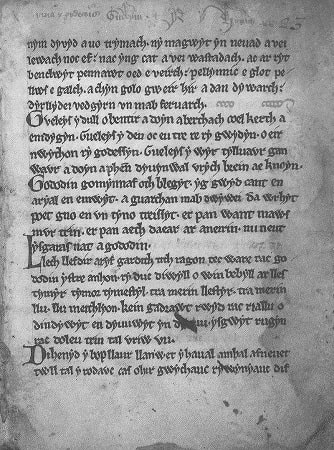
Y Gododdin, a Welsh poem, talked about the legacies of men belonging to the Brittonic kingdom of Goddin. The earliest surviving poem was preserved in a 13 th century manuscript, “Book of Aneirin.”
The poem described the battle of Catreth fought between Saxon and Briton, reporting a failed attempt to regain lost land during Saxon invasions.
King Arthur’s representation was also marked in the poem, and the post also compared a warrior to King Arthur for his valor.
Arthur was undoubtedly at the peak of fame when the poem was composed. The heroic figures in the battle, their mental sufferings, and women mourning have been captured well.
The names of men who died in the battle of Catreth have been engraved in the poem, proving useful for historical studies.
Morrigan
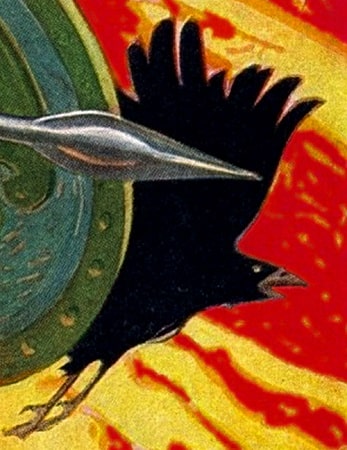
Morrigan was th Irish goddess of war, death, and fate, formed from a trio of sisters into a single goddess. She was the favor-changing phantom queen who offered prophecy and kept fortune.
The Tripartite goddess was depicted on battlefields as a raven carrying and eating carrion, shape-shifting as an elegant lady to a terrible omen of death.
She occasionally also appeared as a washwoman washing off blood stains from the clothes of the dead.
Morrigan was primarily a war guardian spirit who had the potential to predict the outcomes of the battle.
She often appeared as a crow to signify the omens; many soldiers were terrified of her appearance, while some got inspired to fight for their lives.
The Celtic Goddess showed up alongside her sisters Band and Macha and was renowned in Irish stories like the Morrigan and the Cuchulain.
Druidism
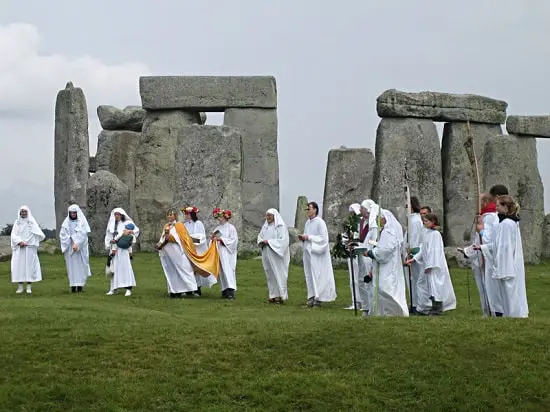
The Druids made up the highest tier of Celtic society, whose beliefs were collectively called Druidism. Druids were priests, judges, or teachers considered the knower of an oak tree in the Celtic tongue.
Traces of their origins could be Wales or have little or no connection to Stonehenge in England.
Nevertheless, no written records were ever found as Druidism forbade its followers to manually inscribe any of their principles.
As the megalith buildings cultures developed from this era, academically excellent Druids were exceptional at mathematics, astronomy, and engineering skills.
The Celts had classified three types of Druids: known for stories and songs of the tribe, the other who were the healers, and the latter ones were philosophers’ teachers.
Although Druids never jotted down their tales, Romans like Julius Caesar mentioned them in their accounts.
Romand reported that Druids were barbaric religious creatures who implemented triple deaths on victims.
As per Druidism, souls never die; instead, they pass from one body to another after death and even assume the existence of rebirth phenomena.
The historic information mentioned that Roman emperor Claudius regarded Druid practices as illegal, eventually planning bloodshed against the Druids.
Boudicca
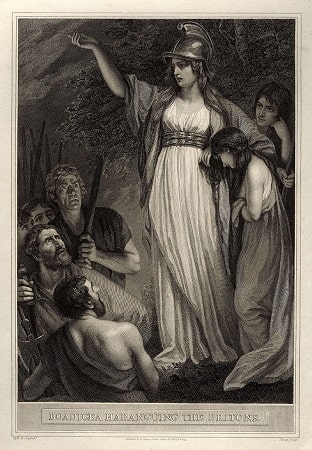
Boudicca was a Celtic queen who led a major uprising against the Romans. She was a freedom fighter born in around 25 A.D to a Celtic British royal family and married Prasutagus.
Prasutagus, later on, ascended the royal throne of East Anglia with whom Boudicca bore two daughters.
After the Roman invasion of southern England in 43 A.D, Prasutahus continued to serve as an ally of the Roman empire.
However, Romans laid extreme violations on Iceni after his death, publicly flogging Boudicca and raping her daughters. Boudicca raged with anger and was determined to avenge the Romans and perish them.
She was a well-trained warrior like any other ancient Celtic woman who led a rebellious movement with other tribes resentful of the Romans in around 60 A.D.
Although her troops faced defeat, the reflection of her courage was extraordinary. During the war’s final days, Boudicca was thought to have poisoned herself to avoid capture.
Conclusion
Celts played a crucial role in shaping modern European virtues, a tribe of unique, rich, and fascinating cultural values.
They had a good grasp of metal handling, artworks, literature, and traditional beliefs.
The Celtic language was the foremost step and founding base of modern English. Britain’s isles still have preserved some branches of Celtic dialects.
Druids passed moral laws and mathematical and astronomical studies, unfortunately only prevalent in oral history except for some Roman accounts.
The Celtic era cooled down with the rise of Roman and Slavic conquest of European territories and are only to be found in ancient inscriptions.
